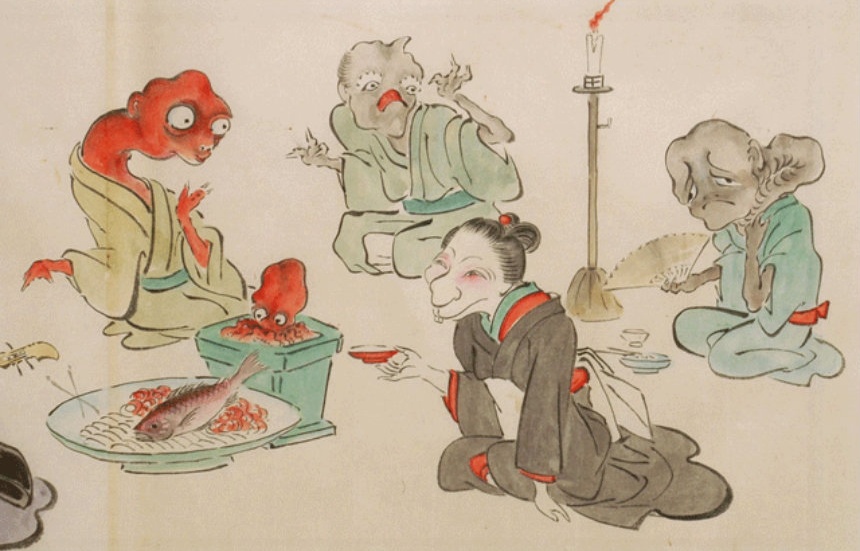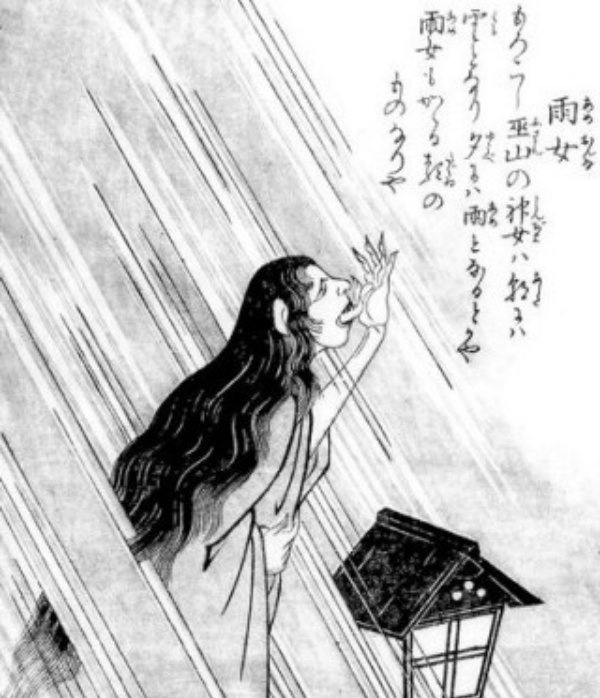A Guide to Japanese Spirits
Anyone who spends time in Japan will notice that ghost stories and supernatural beasts hold a special place in the nation’s consciousness. Whereas vampires, werewolves and mummies are favorites for Western Halloween costumes, the Japanese have a large menagerie of creatures unlike anything you’ll find anywhere else.
By Tokyo Weekenderhttps://www.youtube.com/watch?v=G_IXBklwka4
The yokai go back a long way, whether imported from ancient Chinese mythology or mentioned in folk tales over a thousand years old. Their exploits were collected in Edo Period (1603–1868) publications such as Hyakki Yagyo by Toriyama Sekien, depicted in ukiyo-e by artists such as Katsushika Hokusai, and immortalized in countless manga, anime and live-action films like the infamous Yokai Watch.
1. Hanataka-Tengu
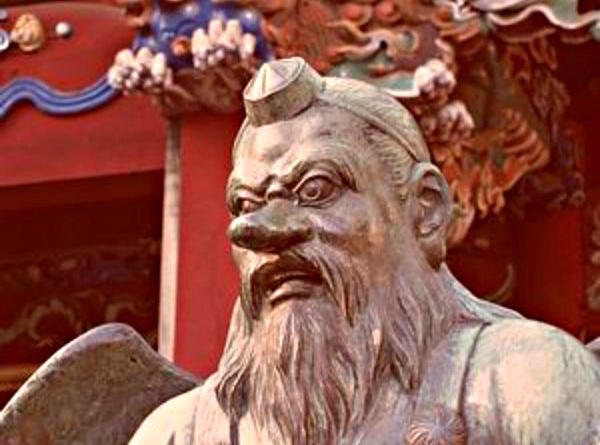
http://www.takaosan.info/tengu/yousi.html
Walk past the doorway of the chain izakaya called Tengu and you’ll see a bright red male face with a long, phallic nose. This is the Hanataka-Tengu—a race of winged humanoids with magical powers and also formidable warriors in battle. Legend recounts that Minamoto no Yoshitsune, the real-life military officer from the early Kamakura Period (1185–1333), was trained in the arts of war by Sojobo, the Tengu King. They also have the habit of mesmerizing and kidnapping humans, and the Edo Period accounts are suspiciously similar to modern-day alien abductions. Mount Takao, on the outskirts of Tokyo, is one of the alleged Tengu nesting sites, and sightings of strange phenomena persist there to this day.
2. Kappa
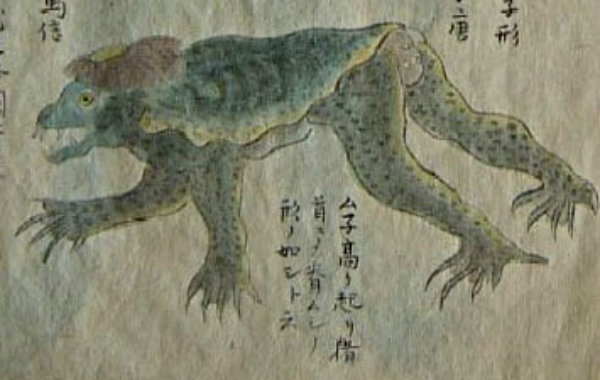
https://upload.wikimedia.org/wikipedia/commons/9/96/Kappa_water_imp_1836.jpg
Kappabashi is an area of downtown Tokyo near Asakusa renowned for its kitchenware stores and its plastic models of food that make handy souvenirs. It also shares the same name as kappa, green reptilian creatures that live in ponds, rivers and lakes, and there are over a dozen statues of them lining the area’s streets. Kappa are mostly regarded as friendly beings with their big eyes, goofy beaks and distinctive crests of hair, but in the Edo Period they were regarded as dangerous carnivores capable of dragging children into the water and ripping their bodies open to feed on their livers, or their shirikodama—a ball of spiritual power housed within the human body. One theory suggests that this monster was inspired by the Japanese giant salamander, a large amphibian that could be found roaming freely in pre-industrial Japan. The nearby Sogen-ji Temple (a.k.a. Kappa-Dera) is dedicated to the creatures, and contains a mysterious relic claimed to be a kappa’s mummified hand.
3. Kitsune

https://en.wikipedia.org/wiki/Fushimi_Inari-taisha#/media/File:Inari_sculpture.jpg
Kitsune is the Japanese word for fox, but it's also the name of a wily trickster yokai notorious for shape-shifting, divining, mesmerizing humans and conjuring mystic fires (kitsunebi). There are numerous folk tales and kabuki plays on the theme of kitsune assuming the forms of beautiful women to enchant unwitting men. Needless to say, these stories don’t end well, but kitsune sometimes form strong emotional attachments with their spouses and any resulting children will be blessed with magical powers.
Kitsune are also associated with Inari, the Shinto god of rice. Their statues can be seen at Inari-jinja (shrines) throughout Japan, stone foxes with eyes and teeth painted red and white. With their reputation for romantic tomfoolery, perhaps it’s no accident that there’s a spooky Inari-jinja right in the heart of Shibuya’s love hotel district on the Dogenzaka-dori!
4. Kejoro
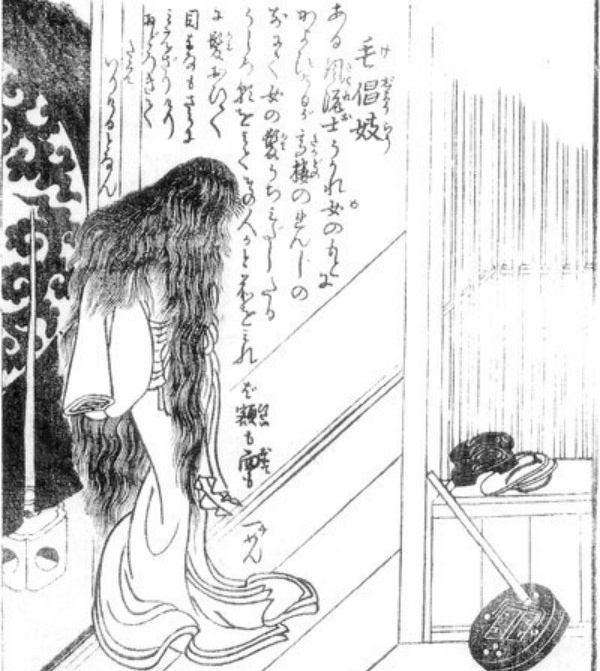
https://upload.wikimedia.org/wikipedia/commons/b/b4/SekienKejoro.jpg
The J-Horror cliché of the female ghost with long, matted hair covering her face may have originated in the Kejoro, a creature said to have haunted red light districts such as Yoshiwara, near Asakusa. If this kimono-clad woman approached you, you might foolishly try to brush away her hair to see her face, only to find her head is made entirely of hair—long dark tresses that come to life and strangle you.
5. Yuki Onna
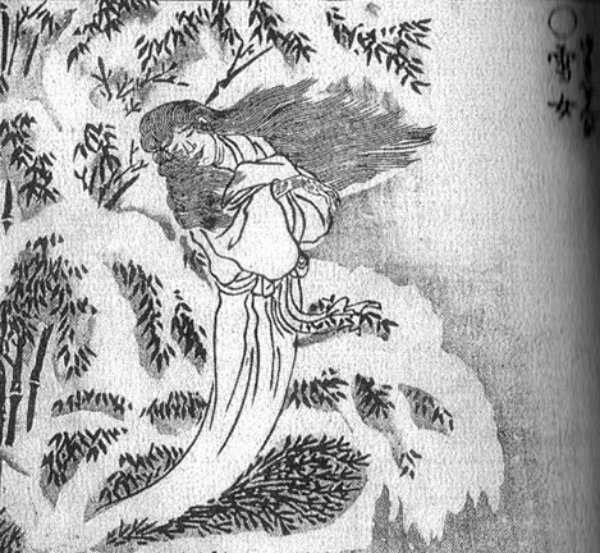
https://upload.wikimedia.org/wikipedia/commons/0/0c/SekienYukionna.jpg
Farmers, monks and wanderers in the countryside were also in danger from manifestations of the supernatural. The Yuki-Onna was a beautiful, snow-white yokai who could freeze a man to death at her touch. She roamed the Japan Alps, and many a fictional traveler succumbed to her icy kisses.
6. Ame-Onna
Yuki-Onna's sister spirit is the Ame-Onna, a yokai that looks like a despondent woman in a drenched kimono with soaking wet hair plastered to her face, constantly licking rainwater from her hands, who haunts villages at night looking for children to snatch from their mothers. Both the Yuki-Onna and Ame-Onna are believed to have originated as minor weather deities in the Shinto faith… before folklore took them down a darker path.


